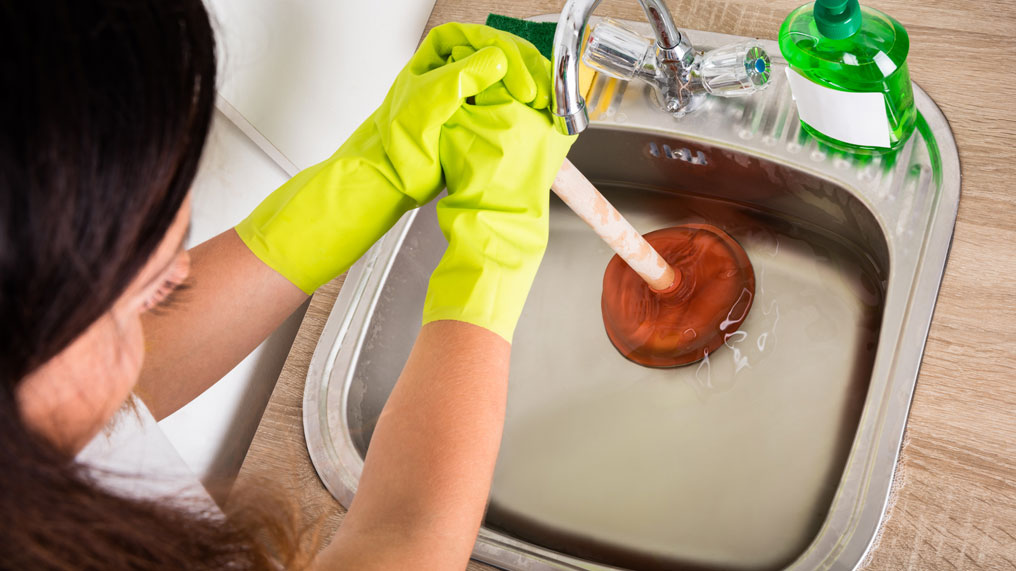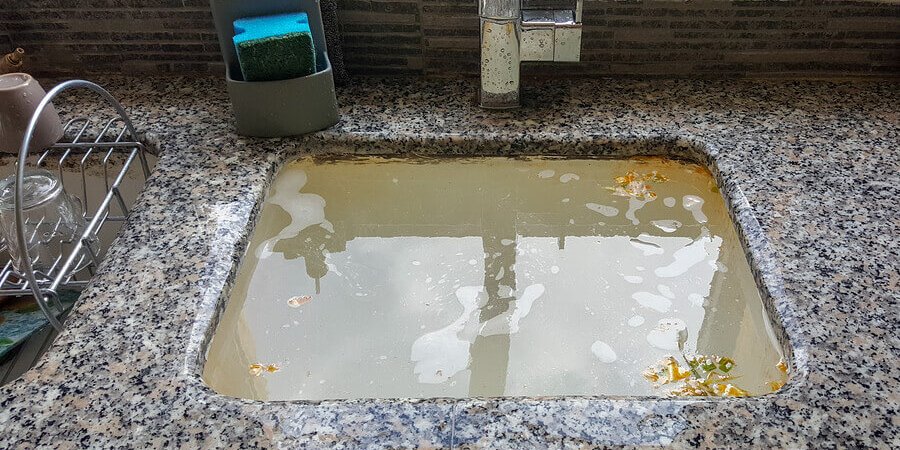Methods to Address a Blocked Drain Prior to Calling in Professional Help
Methods to Address a Blocked Drain Prior to Calling in Professional Help
Blog Article
Every person is bound to have their own unique piece of advice involving 8 Tips For Clearing A Blocked Drain.

Intro
Taking care of an obstructed drainpipe can be an aggravating experience, interfering with day-to-day activities and potentially triggering damage to your property. Nevertheless, prior to reaching out to plumbing experts, there are actions you can take to resolve the issue on your own. In this guide, we'll check out do it yourself remedies and safety nets to deal with a blocked drainpipe effectively.
Recognizing the Problem
The very first step in attending to a blocked drainpipe is acknowledging the signs. Sluggish drain, gurgling noises, foul odors rising from drains, or water backing up are common indications of an obstructed drain. Determining these indicators early can aid prevent better difficulties.
Common Sources Of Obstructed Drainpipes
Recognizing the variables that add to drain pipes clogs is essential for effective resolution. Usual offenders include hair, soap scum, grease, food particles, and international items like hygienic products or paper towels. Tree roots invading underground pipes can also create substantial obstructions.
DIY Solutions
For small clogs, a number of DIY remedies can be reliable. Pouring boiling water down the drain can assist dissolve oil and debris. Baking soda and vinegar or a combination of salt and baking soft drink can function as natural cleansers. Utilizing a plunger or pipes snake to remove obstructions is one more option.
Devices and Equipment
Having the right tools available can make do it yourself drain cleaning up extra efficient. A bettor is a functional tool for getting rid of clogs in sinks, bathrooms, and showers. A pipes serpent or auger can get to much deeper obstructions, while drain cleansing chemicals can be utilized cautiously for stubborn clogs.
Preventive Measures
To stay clear of future blockages, embracing safety nets is essential. Set up drainpipe guards or filters to catch hair and debris before they get in the pipes. Frequently flush drains pipes with warm water to liquify oil build-up, and stay clear of getting rid of grease or solid waste down the drain.
When to Call an Expert
While do it yourself services can settle minor obstructions, particular signs suggest the need for expert aid. Persistent obstructions, foul odors in spite of cleansing initiatives, or multiple drains backing up concurrently are warnings that warrant professional intervention.
Selecting the Right Pipes Solution
When picking a plumbing service, think about elements such as experience, licensing, and client testimonials. Select a trustworthy plumber with a track record of top quality handiwork and transparent pricing practices.
Price Considerations
The expense of professional drainpipe cleaning company can vary relying on the intensity of the obstruction and the plumbing's rates. Demand quotes from several suppliers and inquire about any kind of service charges to guarantee openness and avoid shocks.
Safety Measures
When trying DIY drainpipe cleansing, prioritize security. Put on protective gloves and eyeglasses to avoid contact with dangerous chemicals or microorganisms. Never mix different drainpipe cleansing products, as this can generate dangerous fumes.
Situation Studies
Real-life instances illustrate the performance of DIY remedies and the relevance of prompt expert treatment in settling drainpipe clogs.
Final thought
By complying with the suggestions outlined in this guide, you can properly deal with blocked drains pipes and avoid future plumbing concerns. Whether going with DIY services or looking for specialist support, prompt activity is essential to maintaining a healthy pipes system and protecting the honesty of your home.
How to Clear a Clogged Drain Yourself (And When to Call In the Professionals)
What Can Clog a Drain
Dirt Skin flakes Hair Grease Soap scum Food Offset pipes Tree roots Small objects Mineral buildup DIY Tricks to Unclog a Drain
You can fix this! Once you have identified the source of the clog (or have a vague idea), you can try one or a combination of these fixes in order to clear your plumbing.
Wire Hanger or Snake
Untangle and clear out hair from a drainpipe with a homemade snake. Use a straightened-out wire hanger with a 90-degree angle hook to locate the clog and drag out any unwanted material.
Remember not to push the clog further down to where the wire hanger cannot reach! If you need to follow up with a plunger, give it a try. Your efforts might be more successful after it’s been wire-snaked.
If you want to get fancy and don’t have a wire hanger to spare, head to the store and pick up a hand-operated drain snake. You can get one for $10-$30. It may save you the hassle, and provide additional length to reach deep into the clogged pipe.
Plunger
A cup plunger has a suction cup attached to a wooden handle. The rubber creates a seal around the drain, and increases the pressure force of the plunger.
Plunge for 30-second increments to loosen the clog. This may need to be repeated over the course of 15-20 minutes. Once plunged, run the water to flush the remaining material out of the drain.
Remember– never use a plunger if you have used a chemical drain cleaner. These chemicals can splash up from the force of the plunger and cause serious injury or burns.
Boiling Water
Hot water can sometimes break up materials into a flushable amount. Dirt, grease, and soap buildup requires heat in order to unstick from surfaces.
Take your kitchen kettle and heat your water to a boil. Once it reaches a rolling boil, pour it directly down the drain into the blockage. Carefully follow with plunging, if necessary.
Don’t worry if this takes more than one try! It can often take multiple kettles and repeated plunging in order to clear a particularly stubborn clog.
Chemical Drain Cleaner
As a last resort, pick up a bottle of chemical drain cleaner. Drain-cleaning chemicals are potent, and not very good for the environment.
You may need to wear protective eyewear in gloves before handling your bottle of chemical drain cleaner. Follow the instructions printed on the bottle, and flush with water as soon as the instructions allow. Do not follow with plunging.
Baking Soda and Vinegar
As a safer alternative to chemical drain cleaner, baking soda and vinegar can create a chemical reaction that clears tough clogs.
Combine one cup of cleaning vinegar with one cup of boiling water, and set aside. Once you have done this, pour half a cup of baking soda down the drain. Give the baking thirty seconds to settle and cover a large portion of the problem drain.
Following the baking soda, pour down your vinegar and hot water solution. Once the vinegar and baking soda combine, the mixture will bubble and fix. Let this reaction fizzle in the drain for about an hour.
After an hour, follow with a kettle’s worth of hot water. The heat and liquid should flush out any remaining material.
When to Call a Plumber
If your DIY attempts haven’t cleared your clog drain, it’s time to call in a professional. It’s not worth losing access to your kitchen sink or high-traffic bathroom. A clog in a vital area can keep you from the things you’d rather be doing, and derail your routine.
Anytime a clog is causing water to spread is a time to call in a plumbing service. What starts out as a little bit of water can quickly grow into serious, expensive water damage.
Additionally, a serious clog can result in burst pipes or serious leaks. Make sure you know when to take it seriously!
https://myguysnow.com/how-to-clear-a-clogged-drain-yourself-and-when-to-call-in-the-professionals/

I stumbled upon that entry on What I learned from trying to deal with a clogged drain while doing a search on the search engines. Loved our posting? Please share it. Help other people locate it. Thank-you for going through it.
Get Estimate Report this page